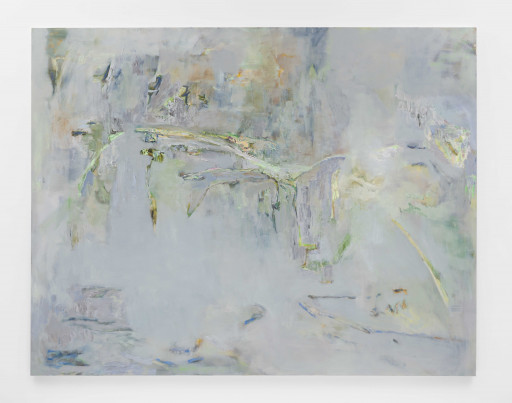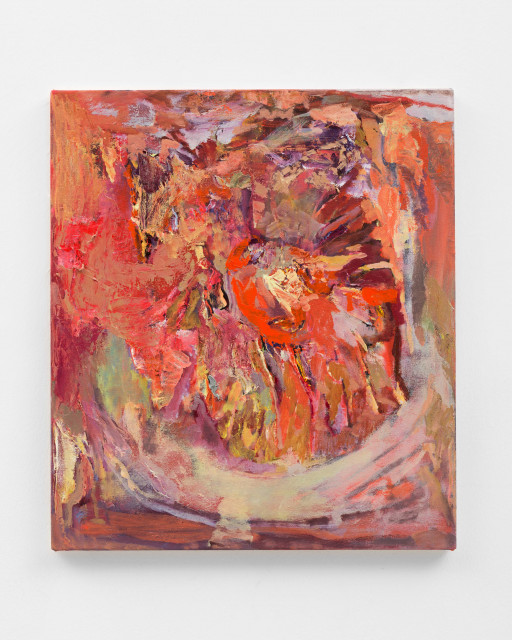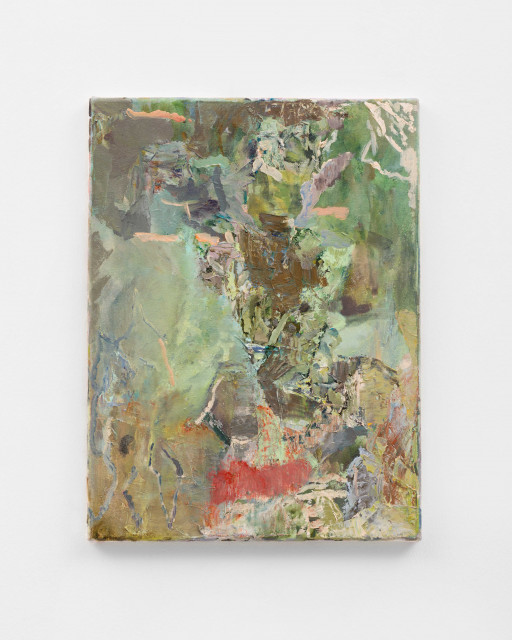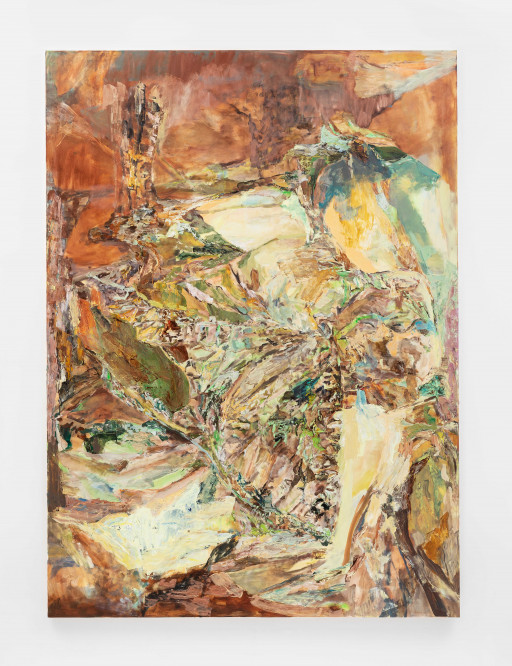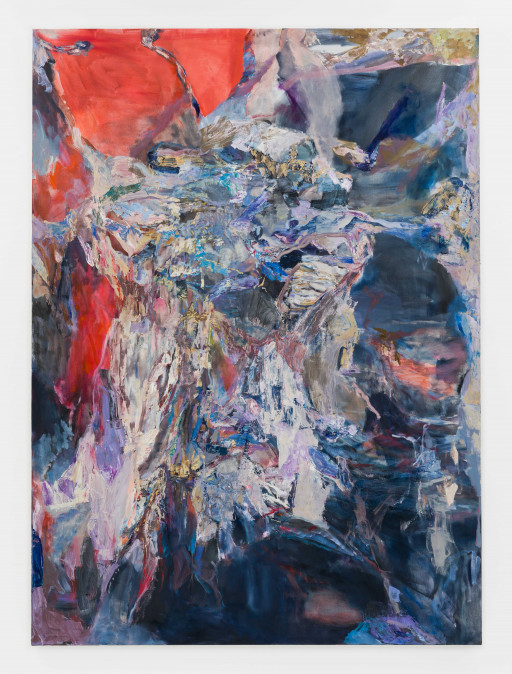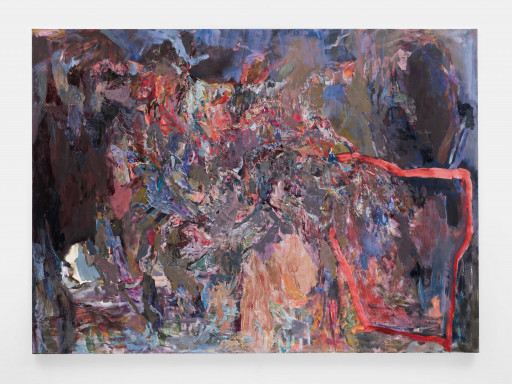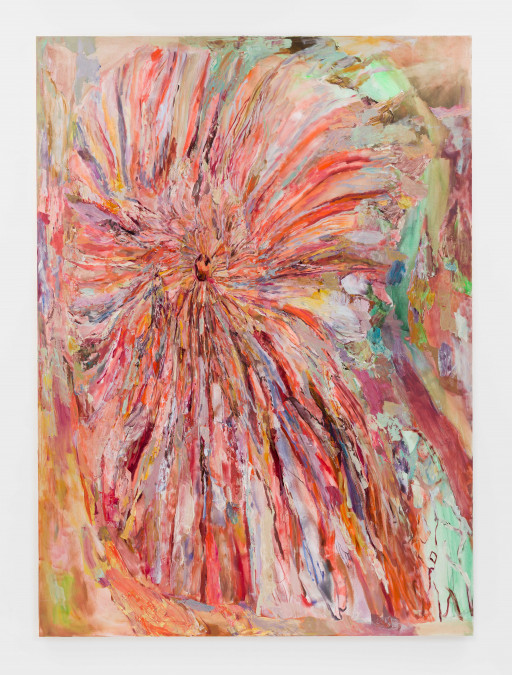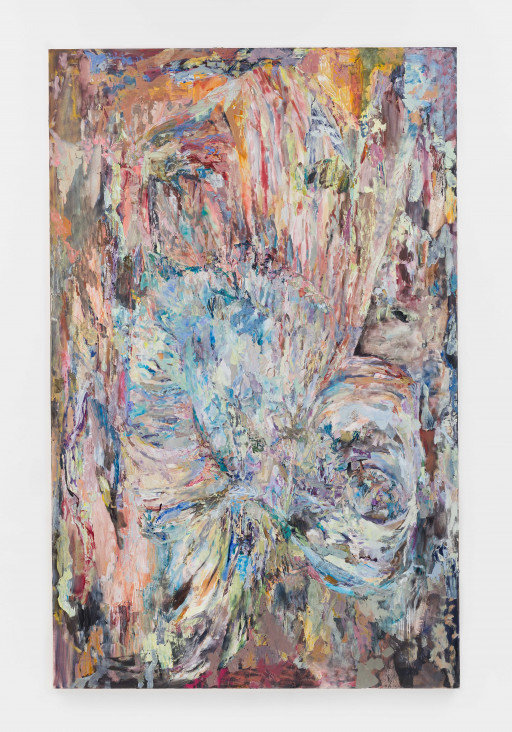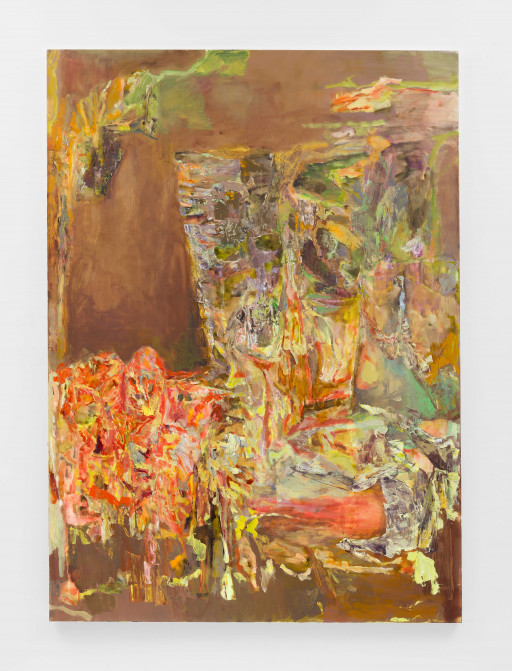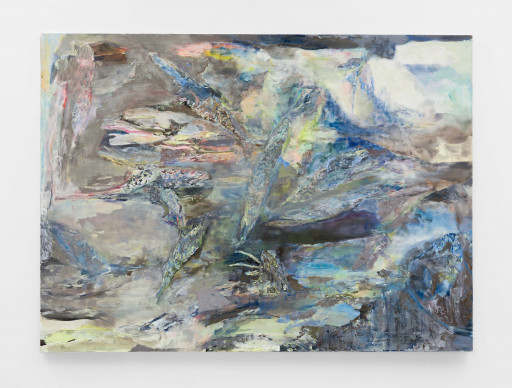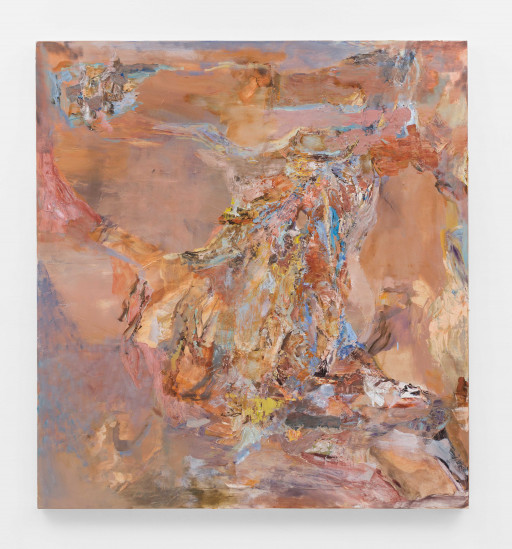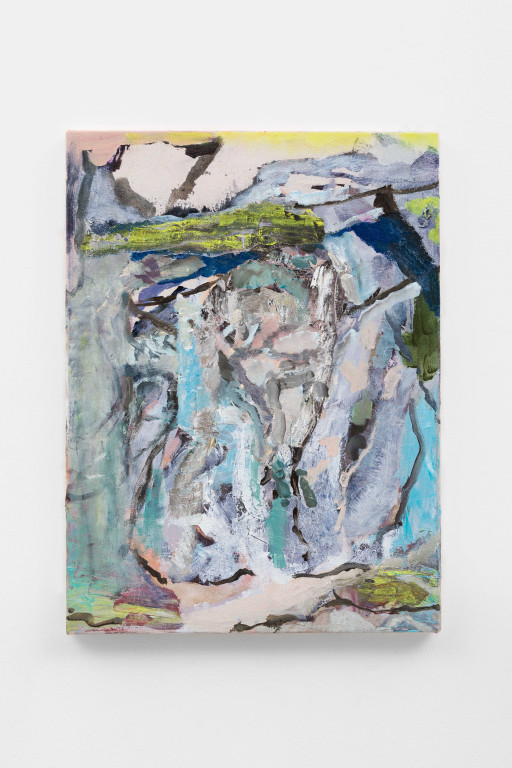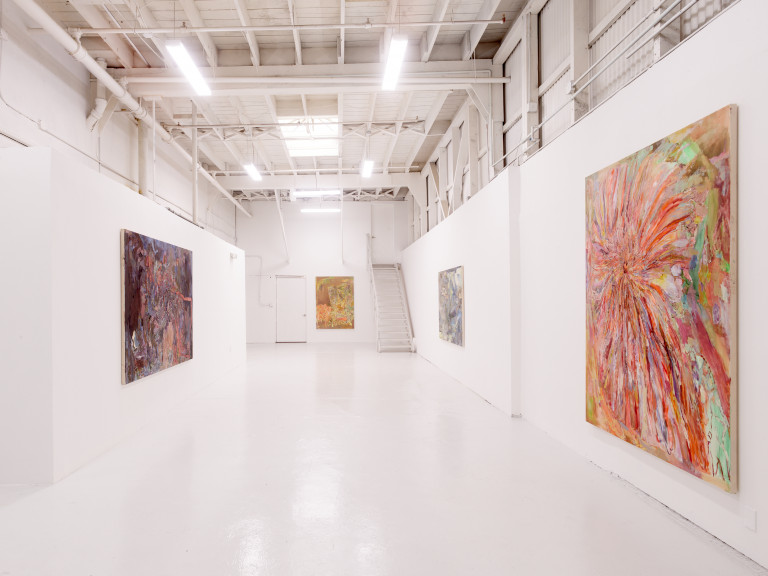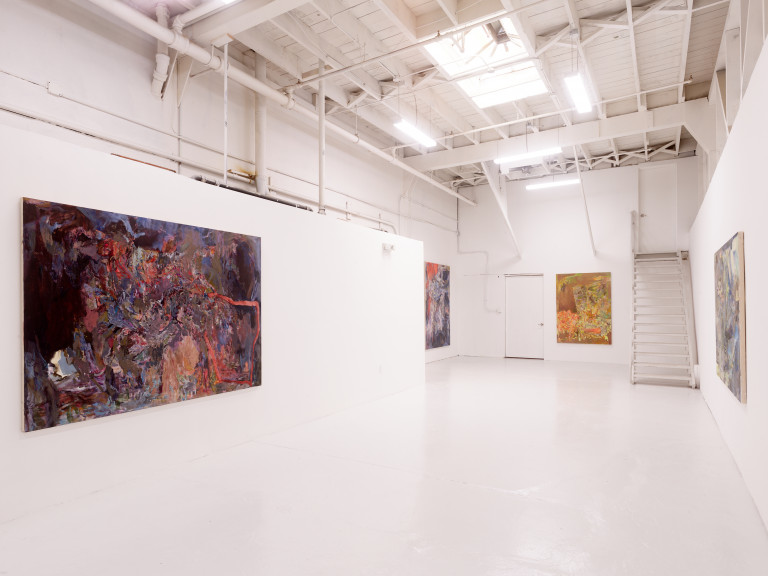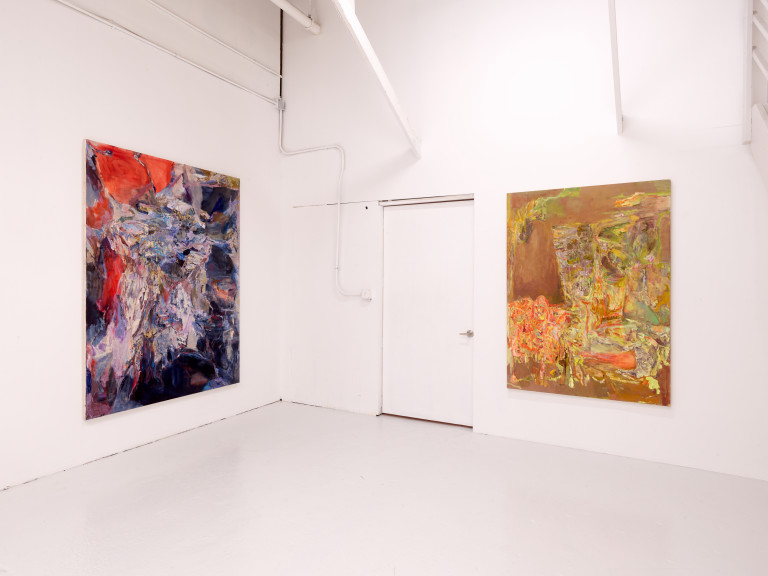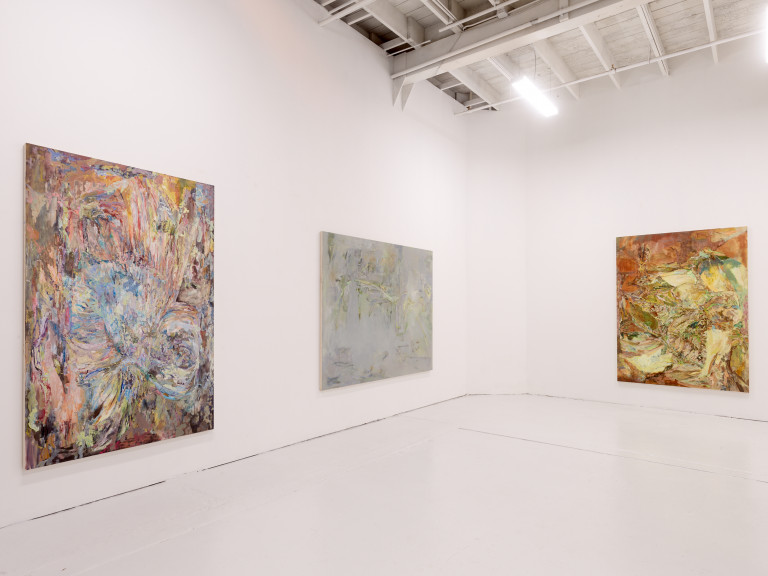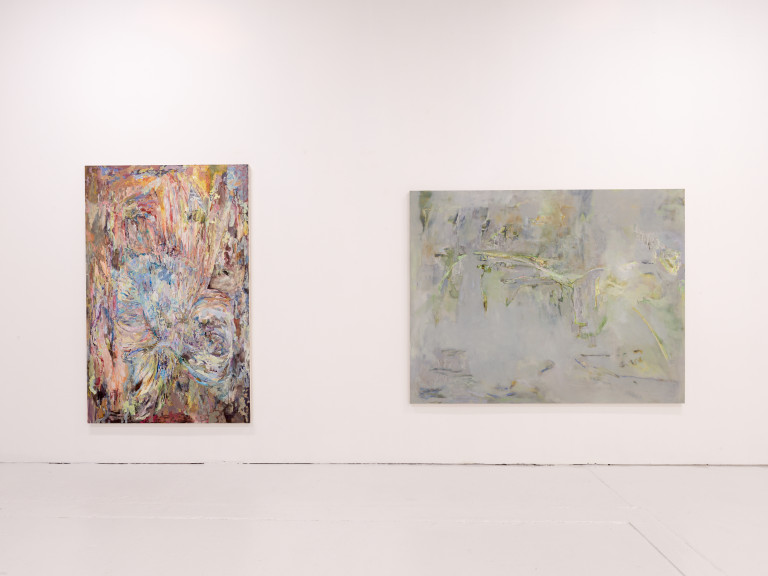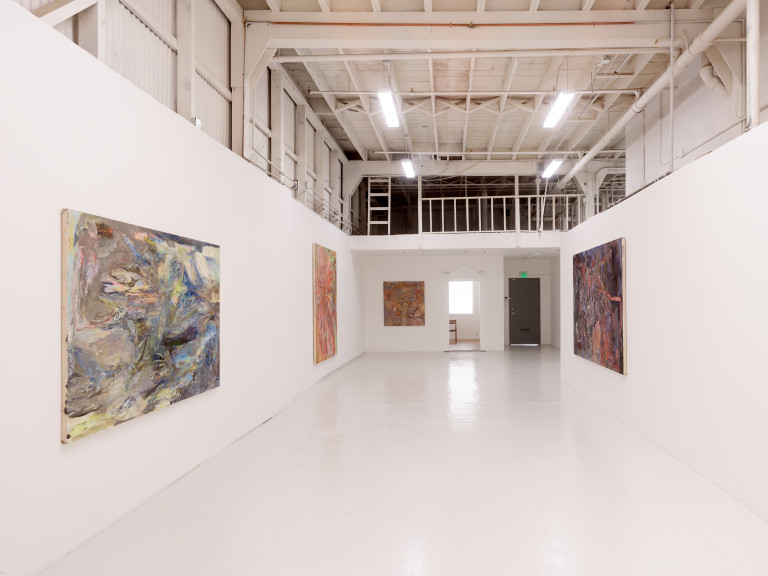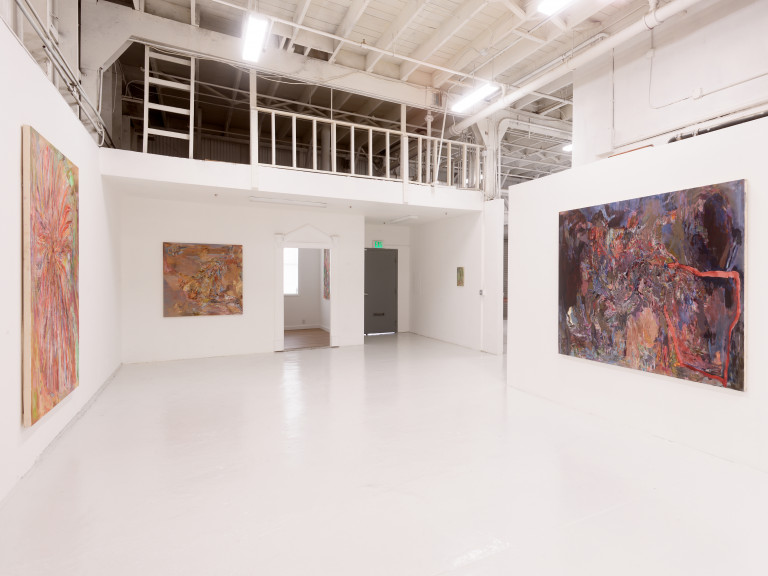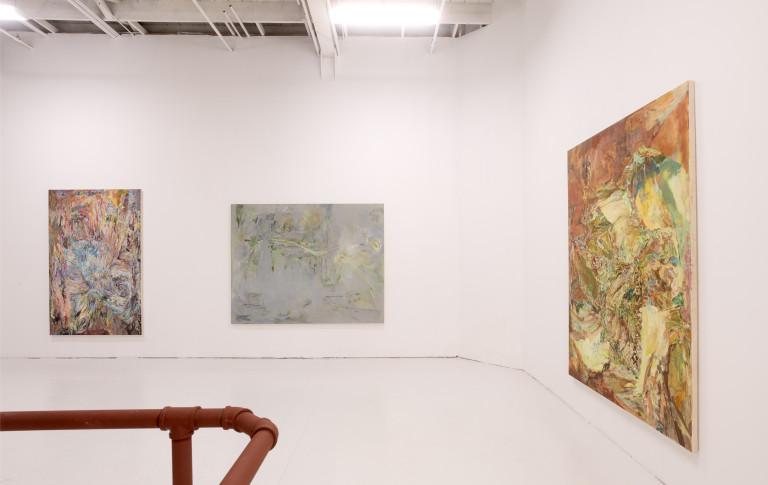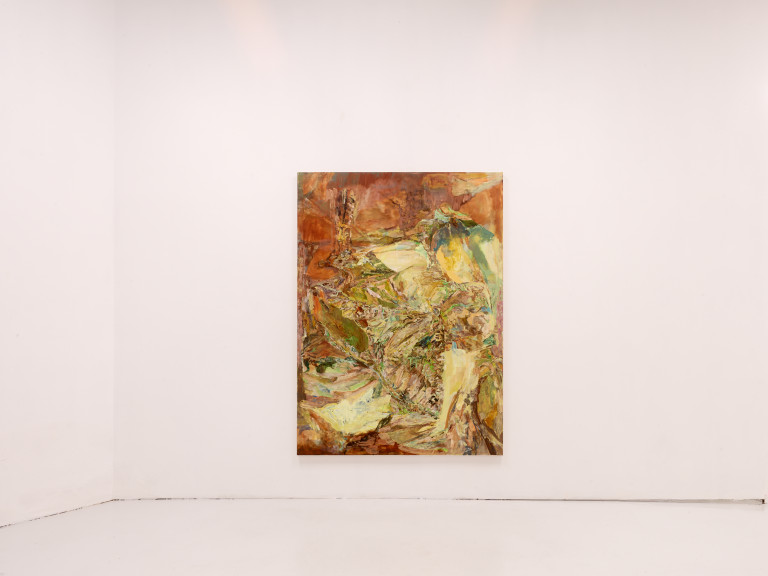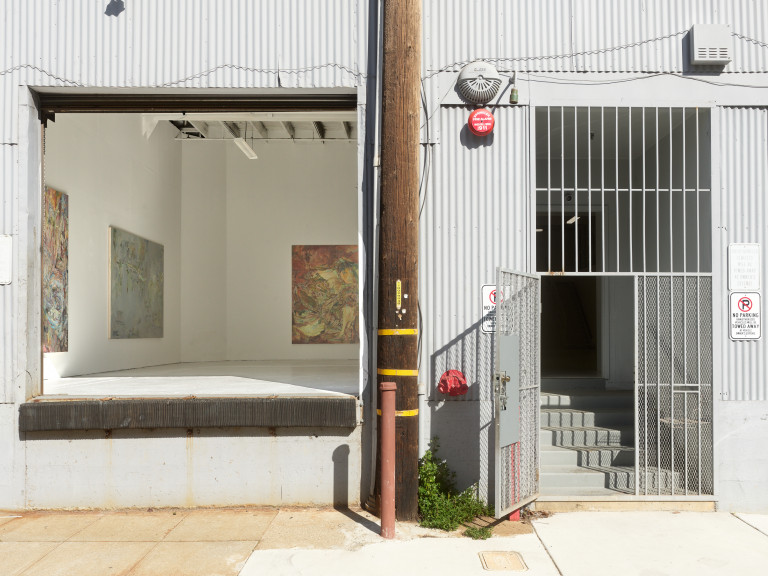Paintings by Francesca Mollett seem to manifest in opposing directions at once. Aiming inward, a sinking force moves toward a localized, subjective, and emotive interior, best understood on a human, down-to-earth, and embodied scale. At the same time, an expansive, geological and omniscient momentum pushes outward beyond the canvas’ perimeters. Within this groundless flux, conceptions of the micro and macro confuse to disorienting effects.
Under a railway bridge near the artist’s studio, local artists and children have decorated a tunnel with recreations of real and imagined fossils from the Cambrian Explosion—a geological site with a large number and wide variety of well-preserved natural lifeforms dating 550 million years ago. Fabricated in mosaics of embedded shells, glass, and metal, the crafted shimmering sculptures viewed in dim light inspired emotive, talismanic qualities that Mollett explores and aims to suspend through painting—calcifying yawning stretches of the past and future in the present moment.
Inspired by light and moisture meeting on reflective surfaces murky with moss and grime, fleeting bursts of radiant color are prolonged in Mollett’s self-formulated mixtures of pigments. Loose gestures in acrylic paint plot supple forms beneath cragged ridges of oil manipulated with a palette knife to accentuate, conceal, and protect the guts of fluid strokes. Mingling abstraction with natural forms, vibrant tinctures cut through earthly substrata, revealing a symphony of supernatural hues. Soft and entangled like living tissue, contours spread and connect before becoming encased in grottos of oil paint.
In color palettes that push natural saturations to their limits, layered deposits of paint build up before breaking into advancing cavities. Working in chromatic combinations inspired by the meeting of water and sediment, the luster of Mollett's prismatic spectrum is amplified by suffused silver paint, charging surfaces with added shimmering iridescence. In other moments, moisture is expressed in rust tones on surfaces that seem to still be in the process of oxidizing. Slipping in and out of various terrains, Mollett’s formal strokes return and reverberate while responding to departures that arise in the process. Paint applied in veils of fog, stratas, veins, tangents, and slippages sit next to moments of more precise consideration and tenderness.
Conceived by the artist as an origin-point or primordial pool from which the other paintings have emerged, Arrows suggests bleeding ponds structured by tendons of blue filament. Radiant beams bow and refract from the basin’s swampy surface while glimpses of motion like darting fish are spotted below. From dim to blazing, ruffled blooms expel a phosphorescent glow. Light and shadow form peaks and recessions of eroded crevices and rupturing folds. Surrounding space enters into the ripples and emerges from the interiors to propagate something new.
In works such as Speed Dial and Spun Step, Mollett courts collapse to encourage new openings as layers are amassed until splitting open and spilling over. Splayed and jagged bursts of gushing crystalline swells until encroaching into endless caverns. Furrows form around channels that eventually break down—their organic symmetries forming an accumulated aggregate of solidified residue. As masses compile, fractures multiply, opening works like a broken mirror reflecting shards of a landscape from the inside out. Abstracted visions of subterranean vortexes fold to reveal apparitions hidden within. They expand, rupture, and unearth deep optical wells that breach surfaces before falling inward. Dissolving as they connect, passages either lead to or buttress against one another, transporting pieces of the paintings back in on themselves.
Like fossils, Mollett’s paintings are traces encased before excavation. Buried within stratified internal structures, impressions of a shell’s spiraling ridges or a rock’s scraggy edges form the contours of something both familiar and alien, like an unconscious core resonating from the inside out. Abstracted through erosion and weathering, natural patterns, like the spiral of a coil-shelled ammonite, guide the rhythms within layered substrates, preserving the power to haunt sensorial, emotional, and spiritual states.
— Marie Heilich
